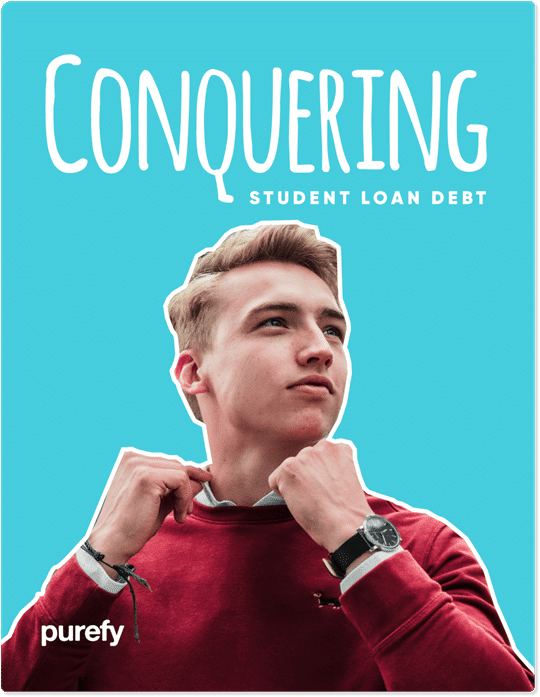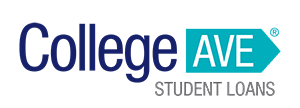Student loans can be overwhelming! Depending on how much you have in student loan debt, they can be a burden for years to come.
Often people with large student loan debt balances or high student loan interest rates would like to refinance but aren’t sure if they’d qualify.
It’s understandable — there is so much information available today that it can be intimidating, and people often don’t know where to begin. Let’s look at the student loan refinance process and brainstorm some tips that will make it easier for you to get the lowest possible interest rate.
Student loan refinance eligibility requirements
Whether you are a recent graduate, someone who has been in the workforce for a while, or a parent looking to refinance Parent PLUS loans, you may be eligible to refinance subsidized or unsubsidized federal student loans or private student loans.
What does that mean? It means that there are private lenders, e.g., banks, credit unions, or finance companies, who are anxious to compete for your business to consolidate your current student loans into a new single loan. By upgrading to a new loan, you will get a better interest rate and terms that may fit your lifestyle better than your current loans.
Just like with a home mortgage or a home refinance, there are requirements for student loan refinancing eligibility that you need to meet before a lending company will work with you. Let’s take a look at those requirements and where you need to fall on the continuum to get the best possible interest rates that will save you money long term.
Credit score
Think of your credit score and your credit report as your business card when approaching any lending institution. It reflects a snapshot of your financial history and documents how you have managed your credit accounts. A high score, above 750, demonstrates to a potential lender that you are responsible and can effectively manage your money.
Your credit report will show the following information:
- Your personal information — your credit report is attached to you and your social security number, which are reflected on the report, along with any addresses, phone numbers, and employers (or at least as many as the reporting agency is aware of). It will also include your spouse’s name and information if you are married.
- Your credit accounts — the bulk of your report will consist of a listing of all the companies where you have credit accounts, such are credit cards, installment loans, auto loans, and mortgages. Each entry will detail the account number, balances, current account status, and payment history. Most creditors report each month, so it will show month-by-month detail, as well as any past due payments or missed payments.
- Your public records — this will include any bankruptcies or foreclosure, as well as any liens on property you may own.
- Recent inquiries — your report shows any companies that may have made what’s known as a ‘hard’ inquiry about your credit history recently. It can have a negative impact on your credit score when you have a lot of inquiries. ‘Soft’ inquiries do not show on your report. Besides lenders, property owners, employers, insurers, other businesses, can all check your credit report.
- Credit score — all that information boils down to a score. To refinance your student loans, you will need a credit score of 670 or higher. The higher your score, the better (lower) the interest rate you will receive.
Debt-to-income ratio
Your debt-to-income ratio (DTI) measures your total monthly debt payments in comparison to your total monthly gross income.
To find the number, take all your monthly payments added together (rent or mortgage, auto loan, credit cards, student loan payments, etc.) and divide by your monthly gross income.
Lenders who refinance student loans want to see that percentage under 38-40% – the lower, the better.
Steady, predictable income or ownership in a business
All your regular income can be included when considering student loan refinance eligibility including paycheck income, and income from partnerships and corporations (if you are an owner). In addition, you can include military income, social security income, rental income, or any income that is shown on your tax return.
Graduation certificate or diploma
You will need to show that you completed a degree program from an accredited college or university.
A minimum amount in student loans
Private lenders want to see that you have at least $5K in student loans outstanding. Most will consider loans up to $200,000 and above and are highly motivated to lend money to people with graduate degrees who they view as ultra-low risk.
Once you have considered these five eligibility criteria, there are also some additional tips that may help you when applying for a student loan refinance. Consider these ideas to help you get the best rates available.
The 2 Best Companies to Refinance Student Loans
Our Top-Rated Picks for 2024 Offer Low Rates and No Fees

Tips to qualify for the lowest student loan refinance rates
Here are some good things to know when applying for a student loan refinance.
Know what you’re currently paying in interest
Whether you have one loan or ten loans, you are paying monthly interest to the lenders who service your loan. It’s important to understand your current rate so that you can compare it with the new rate you are being offered.
If you have multiple loans, find the average rate you are paying for comparison purposes.
Understand current interest rates
To understand whether refinancing makes sense, it’s important to know what the current interest rates are and if it is worth refinancing. Chances are exceptionally good it is – but to be sure, compare your current interest rate with prevailing rates being charged.
These rates change when the overnight rate changes. The overnight rate is defined by the Federal Reserve (the Fed) and is then used by lenders to calculate their lending rates. The Fed meets nine times each year to determine if the overnight rate (what they charge banks to lend money ‘overnight’) should be adjusted to meet their mandates (controlling inflation through price stability and sustainable employment).
As part of the response to the pandemic, the Fed lowered interest rates to 0.00-0.25% in early 2020 where they have stayed through most of 2021. With historic lows holding steady, now is a great time to refinance and one that may not last too much longer.
Calculate Your Savings
Purefy offers a Student Loan Refinance Calculator that allows you to plug in some simple information and get an answer in real time. Simply enter your loan balance, interest rate, and monthly payment for your existing loan, plus your proposed new interest rate and terms offered.
You will find out your new monthly payment and your interest saved over the life of the loan with the press of a button.
Shop around for the best rates
You will want to shop around for the best deal, including the lowest interest rate, loan terms, subsequent offers, and overall specials.
It’s an extremely competitive market right now and private lenders are eager to do business with you. However, don’t make a choice until you have weighed all the options and selected the best deal available.
Consider a variable rate
Private lenders offer both fixed and variable rate loans. A fixed rate loan has an interest rate that will stay the same throughout the life of the loan. A variable rate loan adjusts annually based on the prevailing interest rate during the adjustment period.
If you are planning to pay off your loan in just a few years, a variable rate loan with its lower interest rate may save you considerable money. But be careful — if you have a longer repayment period, a variable rate may cost more money, especially if economic circumstances change.
Weigh the loss of your federal benefits
When you refinance federal loans with a private lender, you will lose access to federal repayment plans and forgiveness programs. These can include:
- Income-driven repayment plans
- Public service loan forgiveness
- Default resolution options
- Debt discharge upon death or disability
- Hardship deferments
Today, many private lenders have similar programs for deferment and forgiveness (although typically not quite as generous), so be sure you find out what is offered and if the new loan is worth the tradeoff.
Consolidate multiple loans
If you are like most people, you took out multiple loans over the course of your academic career. Now you find yourself with a stack of bills to be paid each month, each with a different due date and amount.
Refinancing student loans is an excellent time to consolidate multiple loans into one loan package. Instead of having multiple loans with varied due dates and payment amounts each month, you can group all those loans together into a consolidated loan with one simple monthly payment.
Remember, you are in control
You can refinance multiple times or only refinance part of your loans. It’s up to you!
For example, if you qualify for a 5% interest rate, then only refinance the loans where you would save money. If you have a loan or two with a 3-4% interest rate, then don’t include them in the refinancing process.
Similarly, if your circumstances improve and you qualify for a better interest rate a year from now, then go ahead and refinance again.
See How Much You Can Save
View Details
Collapse
Step 3: See How Much You Can Save
$15,310
Lifetime Interest
Savings
$1,018
New Monthly
Payment
$128
Monthly
Savings
| Current Loan | New Loan | Savings | |
|---|---|---|---|
| Rate | 6.7% | 4.2% | 2.5% |
| Lifetime Interest | $37,520 | $22,210 | $15,310 |
| Monthly Payment | $1,146 | $1,018 | $128 |
Like what you see? Check your actual prequalified rates from the industry’s top lenders in just 2 minutes or less.
What if I can’t qualify for a refinance?
If you find that you can’t qualify for a refinance, you still have several other choices. Often, people have a problem with their credit score or credit history or they just don’t have enough credit history established yet. In those circumstances, there are a couple of options that you can consider.
Cosigned loan
Most private lenders allow a cosigner on a loan. A cosigner is a relative or friend with well-established credit that ‘vouches’ for you by cosigning on your refinanced student loan.
On a cosigned loan, the cosigner’s credit history is considered, and they become liable for the repayment of the loan. The debt also becomes part of their credit history and is factored into credit decisions thereby reducing their buying power until the loan is paid off.
A number of lenders allow a cosigner release which transfers total responsibility to you once twelve consecutive payments have been successfully made. Once executed, the cosigner is released from further responsibility freeing them up to pursue other financial goals.
Spouse loan with PenFed
Unique to the student loan refinance industry, PenFed Credit Union offers a spouse loan where spouses can consolidate their loans and use combined income to qualify for the loan. You are also able to use the credit score of the spouse with the highest rating to ensure you are getting the lowest interest rate possible.
This alternative can be especially practical if one spouse is a stay-at-home parent, and the other spouse has high income to meet the DTI requirements.
Improve your credit score
If neither of these options is available to you, then you can always work to repair your credit and increase your credit score. To do that, consider these factors:
- Start by reviewing your credit report. By federal law, you are entitled to one free annual credit report from each of the three reporting agencies. To order one for your review, you can contact each of the companies individually, i.e., Experian, TransUnion, Equifax. Or you can contact www.annualcreditreport.com to access all your reports at once.
- Make sure that all credit report information is accurate.
- Check for unknown accounts and unfamiliar names and addresses.
- Dispute any issues directly with each credit agency – they all three have an online process that makes it simple.
- Pay down debt to improve your credit score as well as your DTI.
How to find the best student loan refinance deal
Once you have established or verified student loan refinance eligibility, it’s time to find a good lender and approach them about your new loan, right?
Not so fast! Now that you have an understanding of your current situation, it’s time to see what options are available to you and who has the best deal. Fortunately, you can compare lender offers in real-time with just a few pieces of information.
But first, decide on your long-term financial goals — do you want to save money, pay off your debt quickly, or make your monthly budget more manageable?
Consider these options:
Save money on interest
When you refinance, you are agreeing to a new interest rate that will hopefully save you money each month.
For example, your existing loans add up to a total debt of $35,000 and your interest rate is 7% over 10 years. That means you are paying $406.38 per month in loan payments and can expect to pay $13,765.56 in total interest.
When you refinance with your great income and credit score, you could secure a loan for 3%. Now your monthly payment would be $337.96 and total interest of $5,555.51.
That’s a savings of $8,210.05 over the loan term. Not bad!
Pay off debt more quickly
When you refinance, you have the opportunity to reset the loan terms. Most private lenders offer loan terms from 5 years to 20 years and more.
Many people want to pay off their debt faster so that money can be used for other things. Perhaps you want to buy a house, get married, or start your own business. By paying off your student loans faster, you now have a portion of your income that can be redeployed for any of those things.
By choosing a shorter term length, your monthly payment may go up depending on the new interest rate. Use Purefy’s Student Loan Refinance Calculator to test different scenarios and see what works best for your long-term budget.
Get more flexibility in your monthly budget
Conversely, you may want to stretch out your payments to reduce your monthly payment and free up some expendable income each month. Unlike, federal loans that have a 10-year term, most private lenders offer up to 20 years and beyond which with a lower interest rate can greatly reduce your payment each month.
Keep in mind that by lengthening your terms, you may end up paying more in interest over the life of the loan, but that will depend on your new rate.
Using the previous example, let’s say you refinance the same $35,000 in loans at 3%. But instead, you opt for a 15 year loan term. Your monthly payment would be $241.70, and your total interest would be $8,506.64. With the low interest, you still save $5,258.92 overall.

Free eBook: How to Conquer Student Loans
Free eBook: How to Conquer Student Loans

Compare the industry’s best refinance rates in just 2 minutes
Now that you know what you are specifically looking for you can train your eye on negotiating the marketplace. The process used to entail contacting several different lenders, requesting a quote, filling out their information, and waiting for an answer.
Today, the process is simple and easy – you can have competitive quotes from top lenders in less than two minutes.
Purefy developed their Rate Comparison Tool that asks you for some personal information (all handled through secure encryption) and then submits your information to some industry-leading lenders in the private refinance market.
Within almost no time at all, you will have pre-approved quotes from several top lenders that give you a proposed interest rate, terms options, and any special offers they may have in a sortable list. From there, you can review, compare, and select the student loan that best suits your needs.
Does a rate comparison quote hurt my credit score?
No. During the quote process, lenders access your credit score through a ‘soft pull,’ so there is no impact to your credit score. From there, they can determine a pre-qualified offer (if you qualify) that is included in the Purefy report.
Once you select a lender, you will fill out a refinance loan application to determine student loan refinance eligibility and then a full credit report will be obtained from their agency of record. It’s at that point the credit inquiry from your lender of choice will show up on your credit report.
Are there any fees or obligations to refinance through Purefy?
Never. Purefy is committed to working with lenders that don’t charge any fees. In fact, one of Purefy’s requirements for student loan refinancing lenders is that there are no application fees, origination fees, or lending fees. There are also no pre-payment penalties on refinance loans with any of Purefy’s preferred lenders.
Unlike mortgages, where fees can run between 2% and 5% of the total loan amount, student loan refinancing shouldn’t be contingent on fees.
Last look before you start
Requirements for student loan refinancing will require you to take a look at things like your credit score, income, and final degree status. From there, review the tips for things to look for and change or upgrade to improve your chances of getting the student loan refinance that you want.
These tips will help ensure that you’ll qualify for a student loan refinance and be offered the industry’s lowest rates, best terms, and biggest savings.
Once you determine your student loan refinance eligibility, use Purefy’s comparison engine to see the best offers that you qualify for before making your lender selection. Remember there are no fees associated with any Purefy-quoted lenders, including application fees or pre-payment penalties.
If you have questions, you are not in this alone — Purefy offers free student loan refinance consultations with expert advisors. You can schedule a time to meet with them at your convenience.
They understand how refinancing works and can help you compare rates or answer any questions. These expert advisors can also guide you through the application process once you have selected a lender.
Check out Purefy’s Rate Comparison Tool today and get started saving money with a student loan refinance.




















